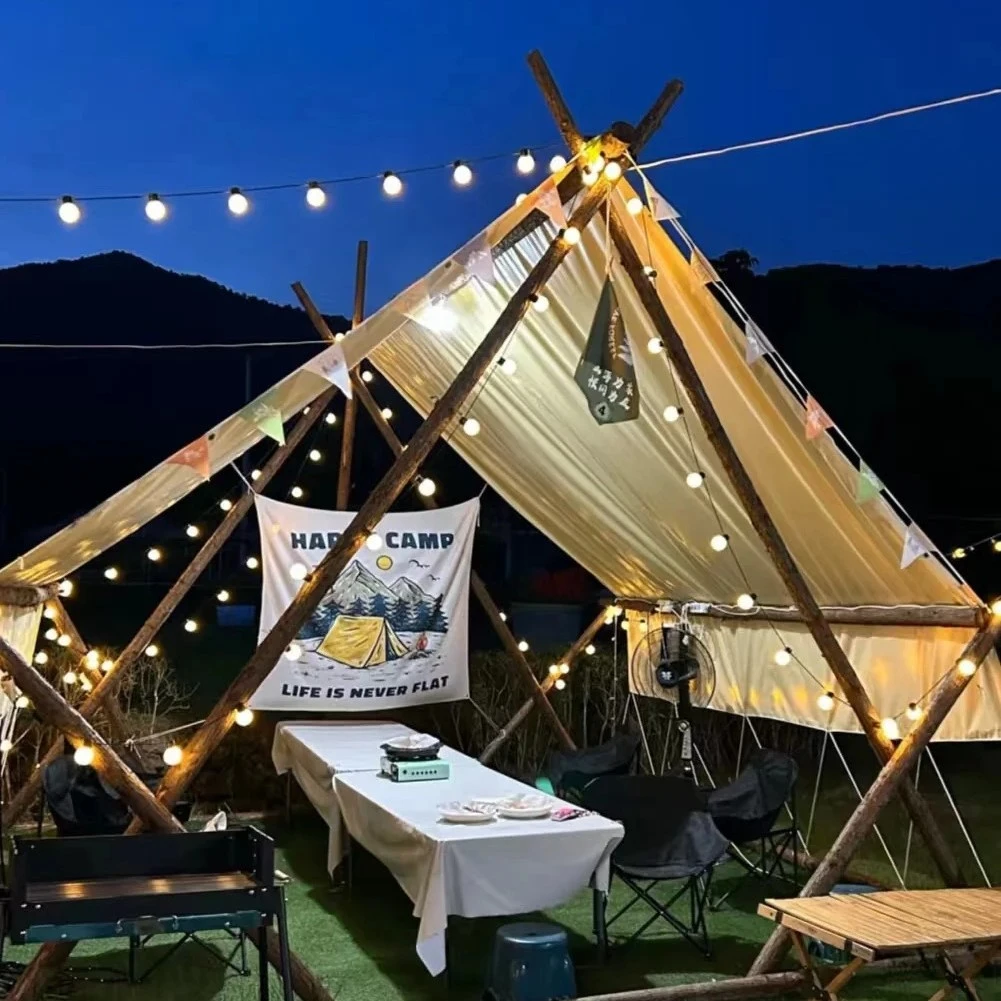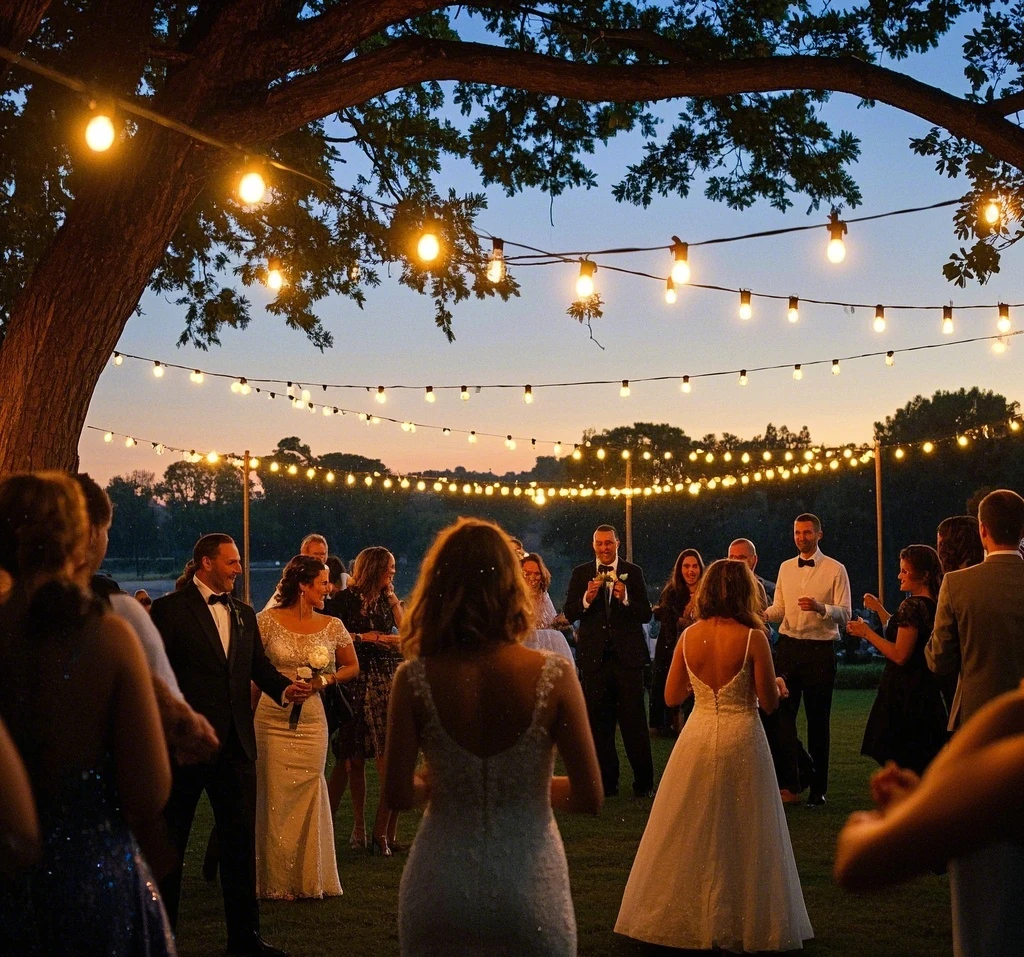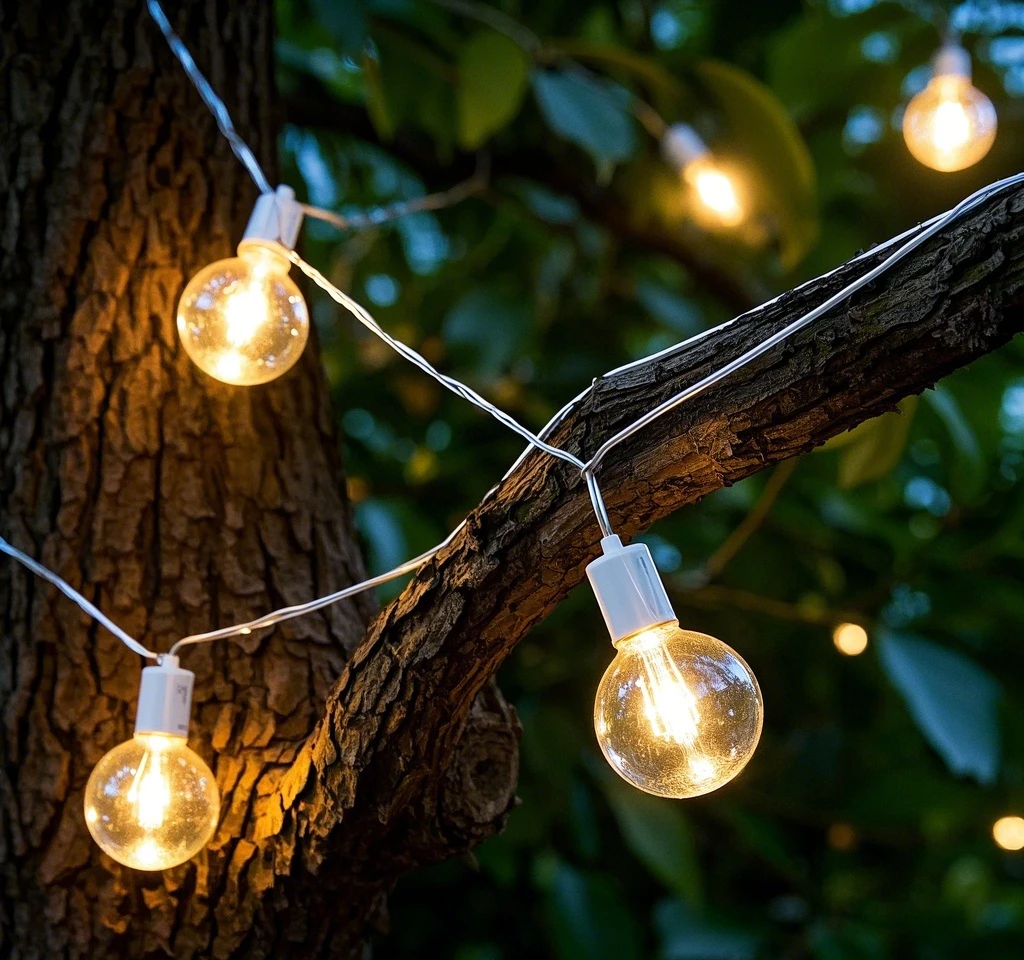Solar string lights have become a popular choice for homeowners and businesses looking to enhance their outdoor spaces with energy-efficient, eco-friendly lighting. These lights, powered by solar energy, offer a cost-effective and aesthetically pleasing way to illuminate gardens, patios, and pathways. However, as with any electrical device, questions about safety arise, particularly regarding the risk of fire. This article explores whether solar string lights can catch fire, the potential causes, and how to ensure safe usage, drawing on expert insights, industry standards, and practical tips to provide a comprehensive guide.

Understanding Solar String Lights
Solar string lights operate by harnessing energy from the sun through a small solar panel, which charges a battery during the day. This stored energy powers LED bulbs at night, offering a sustainable alternative to traditional lighting. Unlike mains-powered lights, solar string lights typically use low-voltage systems, often operating at 5V, 12V, or 24V, which reduces the risk of electrical hazards. Their design prioritizes energy efficiency and environmental sustainability, making them a go-to choice for outdoor lighting.
However, the components—solar panels, batteries, wiring, and LEDs—must function correctly to ensure safety. Faulty or poorly maintained components can introduce risks, though these are rare when proper precautions are taken. To understand the fire risks, we need to examine the key elements of these systems and how they interact with environmental factors.
Can Solar String Lights Cause Fires?
The short answer is yes, solar string lights can catch fire, but such incidents are exceedingly rare when the lights are properly installed and maintained. According to a 2022 article from Conserve Energy Future, the battery, wiring, and solar panel in solar string lights are potential points of failure that could lead to a fire hazard. However, advancements in technology and adherence to safety standards have significantly reduced these risks. Let’s break down the primary causes of fire risks in solar string lights and how they can be mitigated.
Battery-Related Fire Risks
The rechargeable battery in solar string lights is often a lithium-ion type, which stores solar energy for nighttime use. While these batteries are generally safe, issues such as overheating, leakage, or damage can pose a fire hazard. For instance, a damaged battery may leak flammable electrolytes, which could ignite if exposed to a spark or heat source, such as dry leaves or twigs. Overheating can occur if the battery operates outside its optimal temperature range, typically between 15°C and 25°C, as noted in industry guidelines. A low-voltage battery may also overheat if it struggles to power the lights, potentially melting fixtures and creating a fire risk.
To prevent battery-related issues, regular inspection is crucial. Property owners should check for signs of damage, such as cracks or leaks, and replace faulty batteries promptly. Choosing lights with high-quality lithium-ion batteries designed for outdoor use and suited to the local climate can further minimize risks.
Wiring and Electrical Faults
The wiring in solar string lights connects the solar panel, battery, and LED bulbs. Poorly insulated or damaged wires can create electrical hazards, such as short circuits or arcing, which may ignite nearby flammable materials. For example, a 2023 report from Health Canada highlighted that decorative lighting strings with insufficient strain relief could expose live parts, posing an electric shock hazard or fire risk due to overheating. While this report focused on mains-powered lights, similar principles apply to low-voltage solar string lights if the wiring is substandard or exposed to environmental stressors like rain or pests.
To address this, opt for lights with weatherproof ratings, such as IP23 or higher, which ensure protection against water and dust. Regular checks for frayed or chewed wires—especially in outdoor settings where rodents may be present—can prevent potential issues. Using solar fairy lights designed for outdoor use, with coated or insulated wires, further enhances safety.
Solar Panel Issues
The solar panel itself is unlikely to catch fire, as it is typically made of durable materials like tempered glass and aluminum. However, cracks or damage to the panel can expose internal components, potentially leading to electrical faults. For instance, a cracked panel might allow moisture to seep in, causing corrosion or short circuits that could generate heat. While rare, such issues could ignite nearby combustible materials, such as dry grass, especially in arid climates.
Regular maintenance, including cleaning the solar panel to remove debris and inspecting for cracks, can prevent these problems. Choosing panels with robust construction and ensuring proper installation away from flammable materials are key preventive measures.
LED Bulbs and Heat Generation
LED bulbs are known for their energy efficiency and low heat output compared to incandescent bulbs. However, in solar string lights, multiple LEDs are connected in series, and poor design or overloading can cause joint overheating. A 2024 article from AiDot noted that while LED string lights are generally safe, improper use or defective components could lead to heat buildup, posing a fire hazard. For example, wrapping lights tightly around flammable materials like fabric or dry foliage could trap heat and increase risk.
To mitigate this, use LED string lights with appropriate wattage for your setup, as recommended by manufacturers. Avoid overloading circuits by connecting too many strings, and ensure lights are spaced to allow heat dissipation. Solar fairy lights designed for continuous nighttime use are typically safe, as their low heat output minimizes fire risks.
Industry Standards and Safety Regulations
Safety standards play a critical role in reducing fire risks associated with solar string lights. In the United States, the National Electrical Code (NEC) and UL 588 standards govern decorative lighting, ensuring products meet rigorous safety criteria. In Canada, the CSA C22.2 NO. 37-20 standard addresses fire and electrical hazards in decorative lighting, including solar-powered lights. These standards require features like strain relief, weatherproofing, and overload protection to prevent overheating and fires.
Additionally, the U.S. Consumer Product Safety Commission (CPSC) monitors incidents involving decorative lights. A 2016 CPSC recall of Brinkmann solar lights highlighted a unique risk: beveled lenses acting as magnifying glasses, igniting nearby combustible materials under direct sunlight. While this issue is specific to certain designs, it underscores the importance of choosing lights certified by approved testing facilities, such as those bearing the UL seal. Consumers should also check for recalls on sites like productsafety.gov.au to ensure their lights meet current safety standards.

Environmental and Installation Factors
Environmental conditions and installation practices significantly influence the safety of solar string lights. For instance, in areas prone to wildfires, improper placement near dry vegetation can increase fire risks. A 2023 Department of Energy article emphasized that while solar PV systems rarely ignite spontaneously, faulty installations or component defects can create hot spots or arcs that ignite flammable materials. This principle applies to solar string lights, where improper setup, such as draping lights over dry branches, could exacerbate risks.
To ensure safety, install lights with adequate clearance from flammable materials. Use solar-powered lights with rapid shutdown features or manual switches to disconnect power during maintenance or adverse weather. Regular inspections by qualified professionals, as recommended by the International Association of Certified Home Inspectors (InterNACHI), can identify potential issues before they escalate.
Practical Safety Tips for Solar String Lights
To enjoy the benefits of solar string lights while minimizing fire risks, follow these practical tips:
- Choose Quality Products: Purchase lights from reputable brands that comply with UL 588 or CSA C22.2 NO. 37-20 standards. Look for IP23 or higher ratings for outdoor use.
- Inspect Regularly: Check batteries, wiring, and solar panels for damage, especially after storms or prolonged exposure to harsh weather.
- Proper Installation: Ensure lights are installed by professionals or follow manufacturer guidelines to avoid overloading or improper wiring.
- Avoid Flammable Materials: Keep lights away from dry leaves, twigs, or fabric decorations to reduce the risk of ignition.
- Turn Off When Not in Use: Use timers or manual switches to turn off lights during the day or when leaving the area for extended periods.
- Replace Faulty Components: Promptly replace damaged batteries or cracked solar panels to prevent electrical faults.
- Monitor Weather Conditions: In extreme heat or drought, consider temporarily removing lights near flammable vegetation to avoid fire hazards.
Unique Considerations for Solar String Lights
Unlike traditional mains-powered lights, solar string lights offer unique advantages in terms of safety. Their low-voltage operation reduces the risk of electric shock, making them safer for outdoor use, especially in wet conditions. Additionally, their reliance on solar energy eliminates the need for extension cords, which can overheat if not rated for outdoor use. However, their dependence on batteries introduces specific maintenance needs that users must address to ensure safety.
An innovative approach to fire prevention, as suggested in a 2024 Reddit discussion, involves using light-blocking coatings or tarps to temporarily disable solar panels during emergencies. While not practical for everyday use, this concept highlights the importance of having contingency plans for solar-powered lights in high-risk scenarios, such as wildfires.
Conclusion
While solar string lights can catch fire, the risk is minimal when they are properly designed, installed, and maintained. By understanding the potential causes—such as battery issues, wiring faults, or environmental factors—and adhering to safety standards, users can enjoy these lights with confidence. Regular inspections, quality products, and mindful installation practices are key to preventing fire hazards. As solar energy continues to power innovative lighting solutions, staying informed and proactive ensures that solar string lights remain a safe and sustainable choice for illuminating your outdoor spaces.


Leave a Reply